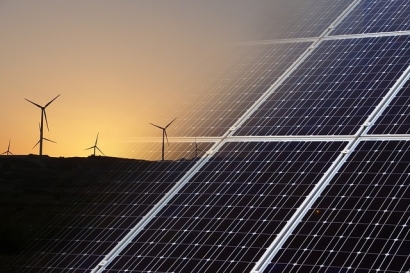
“Renewable energy” is an umbrella term that covers a few different types of energy including energy from sunlight, wind, rain, tides, waves, and geothermal heat. For homeowners, probably the most suitable type of renewable energy includes harnessing sunlight through solar panels.
Homeowners that are still using more traditional fuel sources such as oil or propane might be researching how much they could potentially save on their energy bill if they were to switch to renewable energy, such as solar, to power their home.
While it is true that homeowners can save annually on their energy bill by switching, in many cases, the savings may not be as high as they might think. This article is meant to give an overview of how you can calculate the potential savings of switching to renewable.
Review Your Current Energy Bill
It is essential to start by making sure you have an accurate picture of what your current energy expenditures are on a monthly and yearly basis.
Depending on the type of energy you use for your house currently, prices may fluctuate wildly throughout the year depending on several factors including the temperature outside. This will heavily depend on your geographic location.
If your bill fluctuates month to month, this will impact your savings. It’s essential to look at your bills for the year instead of just month-to-month
Review Your Sunlight Exposure
Obviously, certain states like California and New Mexico receive more sunlight most days throughout the year as opposed to other states like Washington or Massachusetts.
Another thing you will want to evaluate is if your house is under tree branches. If so, this may inhibit sunlight from hitting the solar panels that would be installed on your roof. There may be a solution to this such as installing the solar panels somewhere else on your property, but this could be more expensive.
Research the Cost for Solar Panel Installation
After finding out how much energy you regularly consume, which you can find out on your monthly utility bill, you will be better equipped to find the right system for your needs.
For the sake of example, if you would need an average residential 5kW system, you can expect to pay an about $3 to $5 per watt. This translates to between $15,000 and $25,000, including installation of the panels. This would be before tax credits and incentives, which we will cover in a moment.
Keep in mind that most, quality solar panel systems do not require much maintenance and are designed to last for 20+ years.
Eventually, the cost of installation will be paid off by switching, but it will still take time -- most likely several years -- before recouping your investment.
Be Aware of Various Government Incentives
Right now, homeowners can claim 30% of installation costs on their taxes for solar panel systems installed by December 31, 2019. This credit will dwindle in the coming years.
You may be able to qualify for additional credits depending on where you are located. Each state has a solar ranking and if that ranking is high, you may receive extra incentives. These incentives can include cash back, property tax exemption, waived fees and expedited permits.
One thing we should note, these incentives aren’t going to last forever. Solar is becoming cheaper and because of that state governments will reduce the kind of incentives available.
Total Savings Calculation
Based on all of the information, you should know the factors that will go into calculating your total savings. You will want to get a good picture of your current energy expenditures and use an average cost of $4 per watt for installation costs for a solar panel system. Then you’ll need to do some math to figure out if it would be worth the investment of switching.
What Are Some Other Options?
If switching doesn’t quite make sense for you, there may be some other options for using more renewable energy in your home.
A couple of options below:

